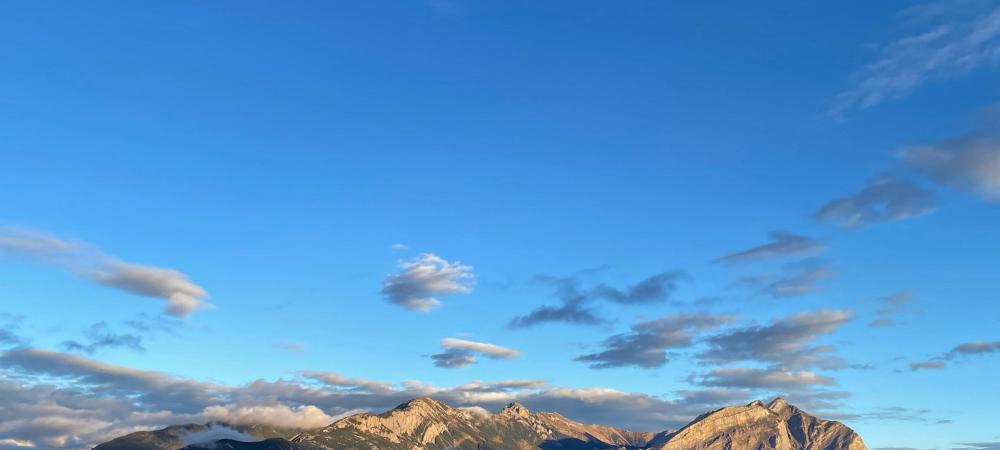
ACMG Mountain Conditions Summary for the Rockies and Columbia Mountains. September 10, 2021.
A normal autumn pattern for weather, conditions, and hazards looks like it will be in play for the next week.
WEATHER
Crisp days with bluebird skies over much (if not all) of the past week will change to more variable weather in all areas of the Rockies and Columbias. There will be some precipitation over the weekend, a couple nice days at the beginning of the week, and then models are showing a significant pulse of moisture on Wednesday. Keep an eye on the forecasts to see if the timing or intensity changes.
CONDITIONS
It sure is nice to walk around in these cooler temperatures and not sweat buckets. There are trade-offs though. When it rains in the valley it snows on the peaks, and things don't clean off quickly.
I drove from Banff to Jasper on September 9, and the mountains are starting to dry out again after the snow earlier in the month. That said, above 3000 m you can expect some lingering snow on all aspects, and on shady north aspects it will be significantly lower than that. Today in the Jasper area I saw snow patches at treeline.
Unfortunately there isn't enough snow to "freshen" up the glaciers much. They still look bony with exposed crevasses and dark ice and rocks showing through. But there is enough snow to hinder some high elevation rock objectives.
It isn't all bad though, it sounds like some ice faces are in better condition than they have been for awhile, with a report of the access gully for the West Ridge of Fay sounding like it climbed well with some frozen snow over the ice. Perhaps there are a few similar objectives that have also been refreshed.
Many hiking and lower elevation rock climbing objectives remain in excellent shape. Today on descent from Roche a Perdrix the steep dirt trails were wonderfully tacky and grippy due to an overnight shower and the recently melted snow.
HAZARDS
Perhaps the biggest hazard for me at this time of year is the surprise I get when I suddenly realize the days have become waaaay shorter. I clearly remember the first time this happened to me as a (very) young climber in the 80's. Brian Webster and I climbed the East Face of Oubliette Peak, and on the second rappel I couldn't understand why I was having trouble seeing where I could make an anchor. I looked over my shoulder to see a beautiful sunset, and, from the same spot 9.5 hours later, I watched the sky brighten enough for us to continue the complicated descent. That night I learned to carry extra clothes.
Other hazards are the normal autumn smorgasbord:
- Rocks will fall when fresh snow starts melting or when it begins to rain.
- Crevasses are poorly bridged and may be hidden, either by snow that has rotted all summer or by the recent snowfalls.
- Temperatures are significantly colder than they have been, especially in the shade.
- Snow may also make route finding harder if trails, landmarks, and markings are covered.
- And windslab avalanches, although thin and in isolated spots, can be very bad news if they take your feet from under you in an exposed location.
OBJECTIVES
This week I would be headed for:
- low elevation rock and alpine rock climbs
- simple glacier climbs
- considering routes with shorter, low angled ice faces if they look white and not grey
- lower elevation scrambles
- aspen and treeline hikes – the larches aren't changing colour quite yet but the deciduous forests and alpine meadows are
I am avoiding:
- shaded alpine rock routes, and alpine rock climbs above 3000 m
- complex glaciers
- steeper, longer ice faces that don't look refreshed
- couloirs and gullies with any amount of snow in them
Enjoy the nice fall weather and conditions while you can, things might get whiter on Wednesday.
Mark Klassen
Mountain Guide